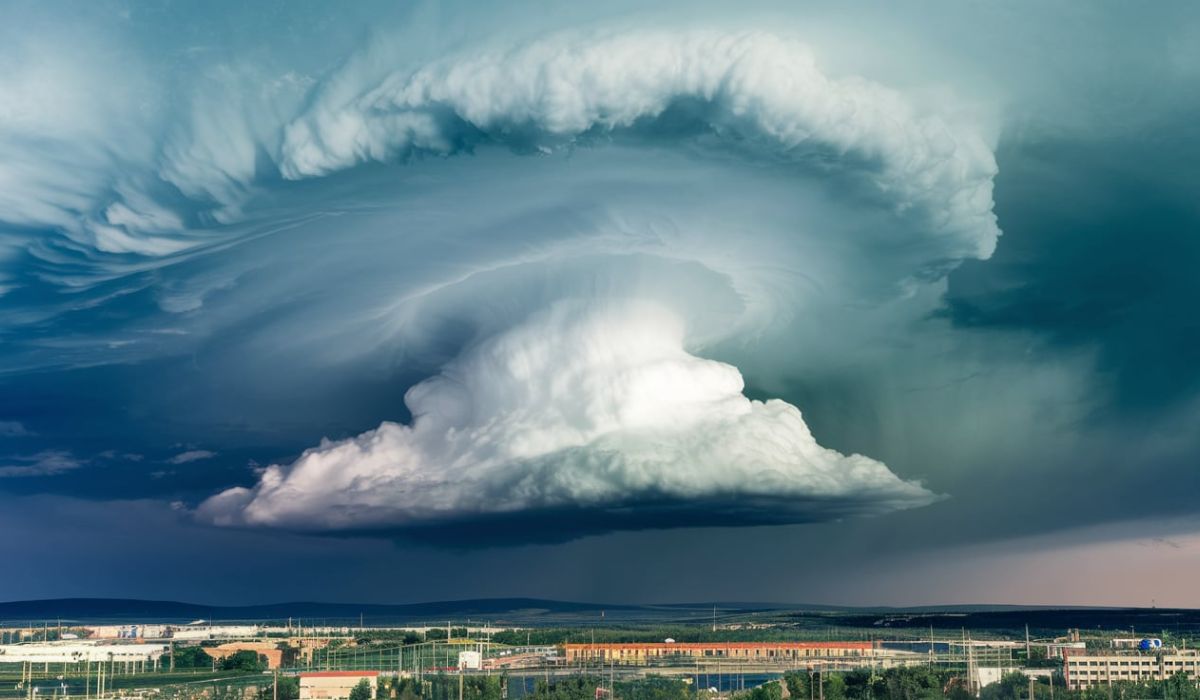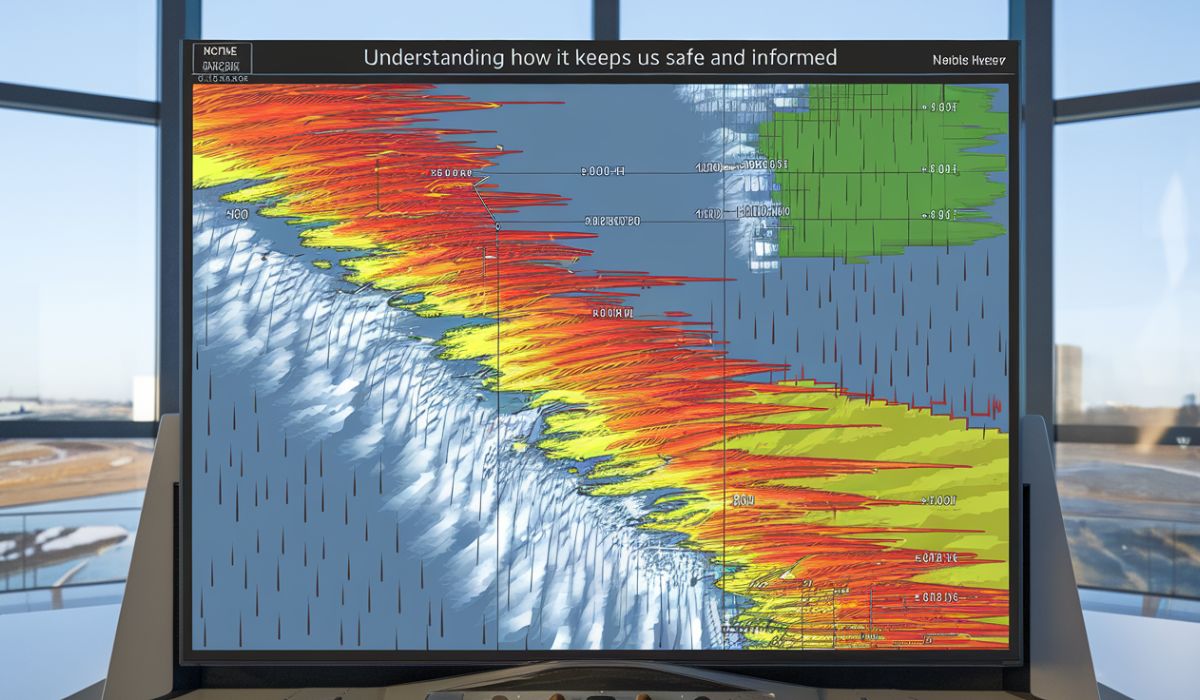Have you ever looked at the weather forecast and wondered how Weather radars predict storms, rainfall, and even hurricanes so accurately? One key tool that plays a significant role in forecasting the weather is weather radar. This powerful technology allows experts to track weather patterns in real-time, providing crucial data that helps keep us safe and informed.
In this article, we’ll explore how weather radar works, its various types, and how it contributes to weather forecasting and safety. Whether you’re a weather enthusiast or just curious about how it affects your daily life, this guide will give you a deeper understanding of weather radar and its importance.
Introduction to Weather Radar

When we check the weather on our phones or TVs, we’re often looking at data gathered by weather radar systems. But have you ever stopped to wonder how that data is collected and how it’s used to predict the weather?
Weather radar is a fascinating and powerful tool used by meteorologists to observe and track weather patterns. Its ability to detect rain, snow, hail, and even tornadoes plays a crucial role in ensuring public safety and providing accurate forecasts.
In this article, we will break down how weather radar works, its different types, and how it is used in weather forecasting and everyday life.
What is Weather Radar?
At its core, weather radar is a system that uses radio waves to detect precipitation and other weather-related phenomena. The radar sends out a pulse of energy (radio waves) into the atmosphere. When these waves encounter an object like raindrops, snowflakes, or even the ground, they bounce back to the radar system, where they’re processed and used to create a map of the weather patterns.
This technology allows meteorologists to “see” what’s happening in the atmosphere in real-time. Whether it’s rain, snow, or the development of severe weather like tornadoes, weather radar gives us a clear picture of the conditions above us.
How Does Weather Radar Work?

Imagine you’re shining a flashlight in a dark room. The light bounces off objects in the room and returns to you, helping you understand what’s there. Weather radar works on a similar principle, but instead of visible light, it uses radio waves to “illuminate” the atmosphere.
Here’s how it works:
- Radar Pulse Transmission: The radar sends out a pulse of radio waves into the atmosphere.
- Reflection: These waves hit particles in the air (like rain, snow, or hail), which reflect the waves back to the radar.
- Signal Processing: The radar measures how long it takes for the waves to return and uses this data to determine the location, speed, and intensity of the precipitation.
- Weather Map Creation: The processed data is used to create a weather map that shows the intensity and movement of precipitation, helping meteorologists forecast weather patterns.
The radar can also detect the size and type of precipitation, allowing for more detailed weather reports.
Types of Weather Radar
There are several different types of weather radar, each designed to serve a specific purpose. Some of the most common include:
- Doppler Radar: This is the most widely used radar type in weather forecasting. It can measure the velocity of precipitation, which is crucial for detecting severe weather like tornadoes and thunderstorms.
- Pulse Radar: This radar sends out pulses of energy and is often used for detecting large-scale weather patterns like rain or snow.
- S Band Radar: This type is used for monitoring large storm systems, especially those with heavy rain.
- X Band Radar: Smaller and more portable, X Band Radar is often used in local weather monitoring and can detect smaller, more localized weather events.
Each radar type has its strengths and is chosen based on the specific needs of weather monitoring.
Doppler Radar: The Game Changer

One of the most significant advancements in weather radar technology is Doppler radar. Unlike traditional radar, which can only detect the presence of precipitation, Doppler radar measures the speed and direction of rain, snow, or hail as it moves through the atmosphere.
This ability to measure velocity is crucial when it comes to detecting severe weather events like tornadoes and thunderstorms. Doppler radar can help meteorologists identify rotating storm clouds that might produce a tornado, allowing for earlier warnings and potentially saving lives.
Benefits of Weather Radar
Weather radar offers many benefits, not just for meteorologists but also for the general public. Some of the key advantages include:
- Real-time Monitoring: Weather radar provides up-to-the-minute data, allowing for timely weather forecasts and warnings.
- Severe Weather Detection: Early detection of storms, tornadoes, and hurricanes helps save lives and minimize damage.
- Improved Forecast Accuracy: Radar data helps meteorologists make more accurate predictions about precipitation and storm movement.
- Flight Safety: Weather radar helps ensure safe air travel by providing pilots with information about weather conditions along their flight path.
By providing detailed, real-time data, weather radar helps improve safety, communication, and decision-making in various sectors.
Weather Radar in Severe Weather Prediction
Perhaps the most crucial application of weather radar is in predicting severe weather events. When storms form, weather radar helps meteorologists track their development, movement, and intensity. This is especially important for events like:
- Tornadoes: Doppler radar can detect rotating storm clouds that may produce a tornado. Early warning systems can then alert people in the storm’s path to take shelter.
- Hurricanes: Weather radar plays a key role in monitoring hurricanes as they form and move toward land. The data helps predict the storm’s track and intensity.
- Flooding: By tracking rainfall patterns, weather radar can help predict potential flooding events and issue warnings for affected areas.
In each of these cases, weather radar provides vital information that can save lives and protect property.
How Weather Radar Impacts Daily Life

Although we may not always notice it, weather radar impacts our daily lives in significant ways. From helping us decide whether to carry an umbrella to making sure flights are safe, weather radar is a behind-the-scenes technology that keeps us informed.
- Traffic Safety: Weather radar helps authorities warn drivers of hazardous conditions like heavy rain or snow, allowing them to make informed decisions about road travel.
- Event Planning: Outdoor events, from concerts to sports games, can be affected by weather. Radar helps organizers monitor conditions and make adjustments if necessary.
- Personal Weather Decisions: Whether it’s deciding whether to cancel plans or adjust your wardrobe for the day, radar data plays a role in everyday decisions.
The Role of Weather Radar in Air Travel
In the world of aviation, weather radar is indispensable. Pilots use radar to avoid severe weather, such as thunderstorms or turbulence, ensuring safe flights. Airports also rely on radar data to track weather patterns and ensure safe landings and takeoffs.
In fact, radar technology in aircraft is a critical part of ensuring pilots can navigate around storms, reducing risks to passengers and crews.
Weather Radar and Climate Change
As the climate continues to change, the role of weather radar becomes even more important. With increasing occurrences of extreme weather events such as hurricanes, tornadoes, and heavy rainfall, weather radar helps scientists study these patterns and better understand their causes.
By providing real-time data, radar helps researchers study how climate change is affecting weather patterns and how we can adapt to these changes in the future.
Limitations of Weather Radar
While weather radar is incredibly useful, it does have its limitations. For example, it can struggle to detect very small particles in the air, like fog, or it may have difficulty tracking weather in remote or mountainous areas. Additionally, radar systems can be affected by interference from buildings, mountains, or other obstacles.
Despite these limitations, weather radar remains one of the most effective tools for monitoring and forecasting weather.
Future of Weather Radar Technology
The future of weather radar technology looks bright, with advancements in artificial intelligence, machine learning, and data analysis set to improve weather forecasting even further. New radar systems are being developed that can detect smaller particles, provide even more precise data, and create more accurate forecasts.
As technology continues to evolve, weather radar will undoubtedly become even more powerful, providing us with even more reliable and timely weather predictions.
Weather Radar for Personal Use
While weather radar systems are typically used by professionals, there are also radar-based apps and websites that provide radar data for personal use. These tools allow you to track storms in your area, check radar images, and make decisions about your day based on real-time weather information.
Common Misconceptions About Weather Radar
Despite its usefulness, there are some common misconceptions about weather radar, such as:
- Radar can only detect rain: While radar is often associated with rain, it can also detect snow, hail, and other weather phenomena.
- Radar can predict all weather events: Radar is a tool for detecting precipitation and movement, but it cannot predict all weather, such as temperature or cloud cover.
Conclusion: The Importance of Weather Radar
Weather radar is a crucial tool in modern Weather radars , helping us understand and predict the weather with greater accuracy. From severe weather prediction to everyday decisions, radar technology has a significant impact on our lives. As technology continues to advance, we can expect even more detailed and accurate weather forecasts, keeping us safer and more informed.
Frequently Asked Questions (FAQs)
What does weather radar detect?
Weather radar detects precipitation such as rain, snow, and hail, and it can also measure the intensity and movement of these weather patterns.
How does Doppler radar work?
Doppler radar measures the velocity of Weather radars , allowing meteorologists to track storm rotation and detect severe weather like tornadoes.
Can weather radar predict tornadoes?
Yes, weather radar, particularly Doppler radar, can detect rotation in storm clouds, which may indicate the development of a tornado.
How accurate is weather radar?
Weather radar is highly accurate in detecting precipitation and storm movement, but its effectiveness can be limited by factors like terrain and small particles.
Can I use weather radar for personal use?
Yes, there are apps and websites that allow you to access real-time weather radar data for personal use, helping you make informed decisions about your day.
